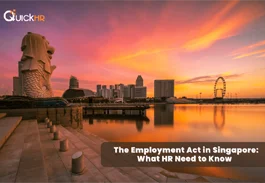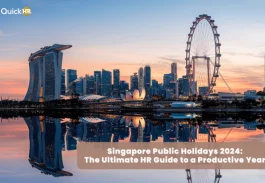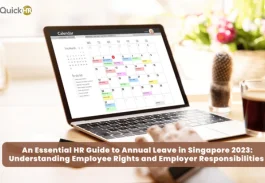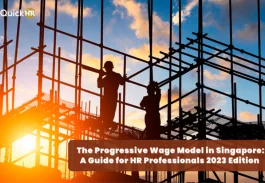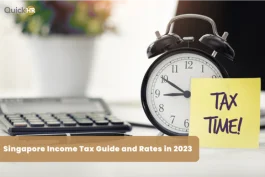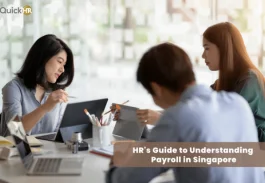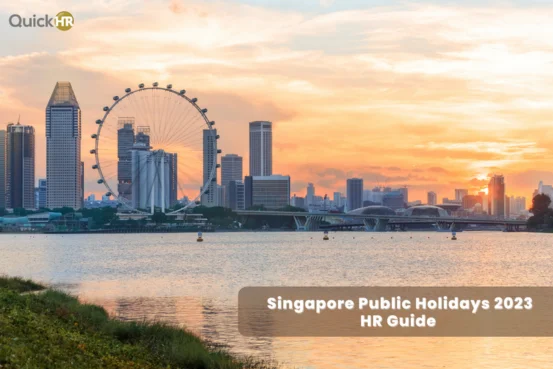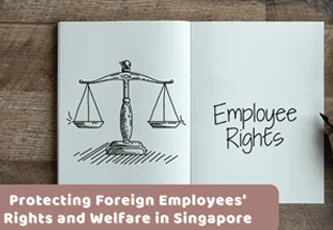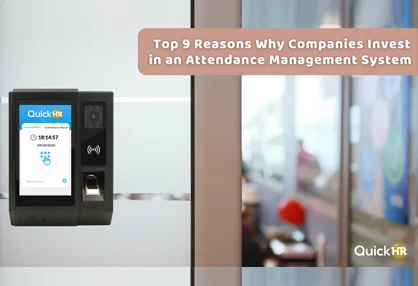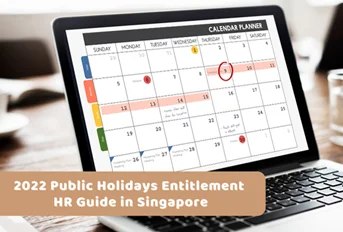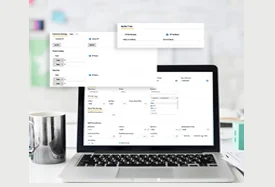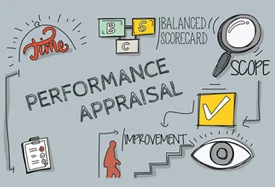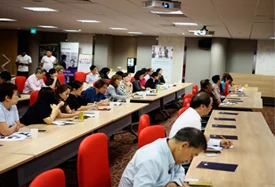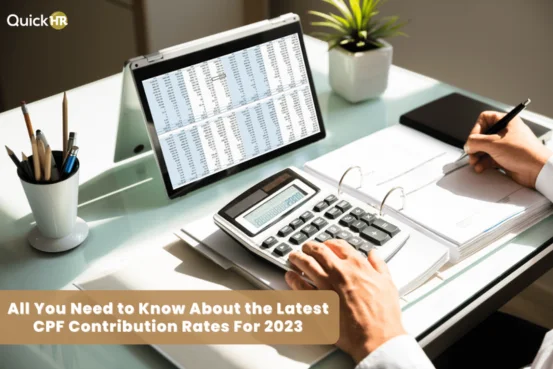
CPF Guide Singapore: CPF Contribution Rates, Additional Wage Ceiling & CPF contribution cap and More (2024)
Posted on 16 March 2023 in Business | Anna Beatrice
Updated as of January 2024
Managing CPF contributions while staying compliant with legal regulations has always been a daunting task. With its intricate, time-sensitive procedures, it can be a challenge even for experienced HR professionals.
If it’s your first time going through the process of CPF in Singapore, you may be overwhelmed by the various and complicated schemes and options. To help you make sense of it all, here’s our ultimate guide to CPF in Singapore.
By the end of this guide, you’ll know more about the CPF contribution rates that companies must pay and who are eligible for CPF contributions.
What is CPF (Central Provident Fund) and why does it exist?
CPF (Central Provident Fund) was established to play one of the most important functions in Singapore’s social security system.
It’s a compulsory, employment-based savings scheme where all eligible employees and employers are required to make regular contributions to the Fund. The proceeds will then be saved for the major financial needs including retirement, healthcare, and home ownership.
Ready to simplify your payroll management and ensure compliance with CPF regulations? Try our payroll software today!
Sign up for Free TrialIf you hire employees, you will need to make CPF contributions for employees who are:
- Singaporean Citizens
- 3rd Year and Onwards Singapore Permanent Residents (SPRs)
- 1st and 2nd Year SPRs who jointly applied with their employer(s) to contribute at full employer-full employee rates
Each eligible Singaporean will have their own individual CPF accounts to which these contributions are deposited. Similar to a bank savings account, these deposits earn interest, allowing the CPF account holder or member to grow their money.
For instance, a certain portion of your employee’s salary is automatically deducted as CPF contributions every month will be deposited into their CPF accounts. Then, their take-home pay is lower than their official salary.
What are the current CPF contribution rates in 2024 for Singaporean employees/employers?
Under the CPF scheme, employees earning more than S$500 per month have to contribute a portion of their salary to their CPF accounts. CPF contributions must be made every month.
CPF contributions are made of two categories: CPF contribution by employee and CPF contribution by employer.
The CPF contribution rates from 1 January 2024 vary according to age bands. Here’s how much (by percentage of your employees’ wages) each person contributes:
| Age of employee | CPF contribution by employer | CPF contribution by employee | Total CPF contribution rate |
|---|---|---|---|
| Up to 55 years old | 17% | 20% | 37% |
| 55 to 60 years old | 15% | 16% | 31% |
| 60 to 65 years old | 11.5% | 10.5% | 22% |
| 65 to 70 years old | 9% | 7.5% | 16.5% |
| Above 70 years old | 7.5% | 5% | 12.5% |
For Example:
The CPF contributions for a 57-year-old employee who earned S$5,000 in January 2024 are calculated as follows:
| Gross wage | S$5,000 |
|---|---|
| Total CPF Contribution | S$5,000 x 31% = S$1,550 (rounded up) |
| Employee’s CPF Contribution | S$5,000 x 16% = S$800 (rounded down) |
| Employer’s CPF Contribution | S$1,550 - S$800 = S$750 |
Note: None of the above applies to those who are self-employed. Any CPF contributions are voluntary EXCEPT Medisave contributions, which they’ll be prompted to pay after filing their taxes each year.
This does not also apply to individuals working overseas as CPF contributions aren’t mandatory in that instance.
CPF Contribution Rate for Permanent Residents (PR)
The CPF contribution for Permanent Residents does not differ from that of Singaporeans, except for the first two years of when an employee acquires his/her PR status. In the first two years, both employers and employees pay a lower contribution to help them adjust to the lower take-home pay.
For 1st year PRs with a monthly salary of S$750 or above, their contribution rates differ by age, as follows:
| Singapore PR Employee’s Age (Years) | Employer’s Contribution | Employee’s Contribution |
|---|---|---|
| Up to 55 | 4% | 5% |
| 56 to 60 | 4% | 5% |
| 61 to 65 | 3.5% | 5% |
| Above 65 | 3.5% | 5% |
For 2nd year PRs with a monthly salary of S$750 or above, their contribution rates differ by age, as follows:
| Singapore PR Employee’s Age (Years) | Employer’s Contribution | Employee’s Contribution |
|---|---|---|
| Up to 55 | 9% | 15% |
| 56 to 60 | 6% | 12.5% |
| 61 to 65 | 3.5% | 7.5% |
| Above 65 | 3.5% | 5% |
Similar to Singaporeans, PRs who earn under S$50 do not receive any CPF contributions.
Those who earn above S$50 to under S$750 will receive the same employer’s CPF contributions, but lower employee’s CPF contributions.
Employers have the option to make full CPF contributions for the PR employees if they choose to do so.
Once the PR employee becomes a 3rd year PR, full CPF contributions – similar to a Singapore Citizen employee – must be paid.
Get a FREE copy of our exclusive
HR Guide to CPF in Singapore to know
more about CPF contributions rates and contribution caps
under different scenarios.
Download Now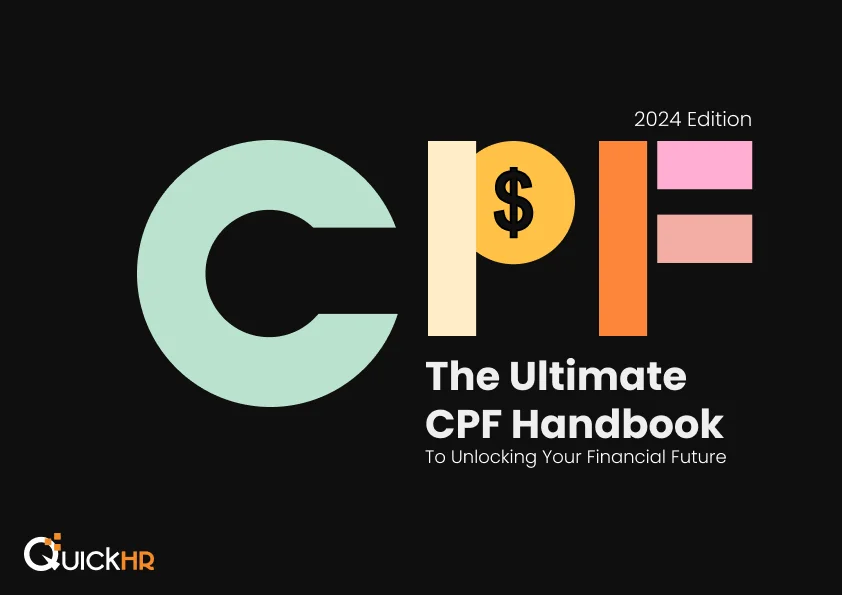
What is the CPF contribution cap?
Before processing the CPF contributions of your employees, you must know that there’s a limit to how much they can contribute each month. The contribution cap is known as the CPF Wage Ceiling. There are three parts to this: the Ordinary Wage Ceiling, the Additional Wage Ceiling, and the Total Wage Ceiling.
The Ordinary Wage Ceiling is a CPF contribution cap on your employees’ monthly salary and it is currently capped at S$6,800 for contributions made in the months of January to December 2024 (previously S$6,300 from September to December 2023). This implies that the first S$6,800 of their monthly salary is subject to CPF contributions and any amount above S$6,800 will not be subject to CPF at all.
Note: As announced in Singapore Budget 2024, the CPF Ordinary Wage Ceiling will
- Be raised by S$500 to S$6,800 from January 2024.
- It will go up to S$7,400 from January 2025, and
- Finally fixed at S$8,000 from January 2026
The Additional Wage Ceiling is a yearly CPF contribution cap on the employees’ wages not exclusively earned in respect of an employee’s employment during that month, such as annual wage supplement, bonuses, and leave encashment. The formula for calculating the Additional Wage Ceiling is S$102,000 – Ordinary Wages subject to CPF for the year.
Example of Additional Wage Ceiling Computation
A 57-year-old employee has earned a monthly salary of S$6,800 and an annual bonus of S$50,000 in January 2024, the following CPF computation applies:
Additional Wage Ceiling for year 2024:
S$102,000 - (12 x S$6,800) = S$20,400
The employee’s CPF contribution on the bonus for January 2024:
| Total CPF Contribution | S$20,400 x 31% = S$6,324 (rounded up) |
|---|---|
| Employee Contribution | S$20,400 x 16% = S$3,264 (rounded down) |
| Employer Contribution | S$6,324 - S$3,264 = S$3,060 |
Note: If an employee receives monthly salary exceeding S$6,800 and a bonus exceeding S$30,000 before the CPF revisions with effective from 1 January 2024, his/her December 2024 Ordinary Wage CPF contribution will exceed the Total Wage Ceiling of S$102,000 per year. Under such circumstances, employer must still calculate the Ordinary Wage COF contributions for December 2024 based on S$6,800 and seek a refund from CPF for the contribution in excess of the total Wage Ceiling.
What are the different types of CPF accounts and what are their purposes?
All Singaporeans and permanent residents start off with three CPF accounts that are opened to contain money for several purposes. These accounts include the Ordinary Account (OA), Special Account (SA), and Medisave Account (MA). Upon turning 55, they also gain a fourth account, the Retirement Account.
| CPF account | Employees can use it for: |
|---|---|
| Ordinary Account (OA) | Can be used to pay for housing, higher education, and investments. Anything left over is to be used for retirement. |
| Special Account (SA) | To be mainly saved for retirement but can also be invested to a certain degree. |
| Medisave Account (MA) | To pay for hospitalisation, other approved healthcare and medical expenses and to pay for MediShield / Integrated Shield plans. |
| Retirement Account (RA) | They only get an RA once they turn 55. Their OA and SA will merge to form their RA, which will contain their retirement savings. |
Let’s say your employee’s total CPF contribution every month is S$1,850. This portion will then be distributed among the three CPF accounts including OA, SA and MA.
What are the current CPF allocation rates for 2024?
Once the total amount is paid into CPF, it is divided between their various accounts. Take note that these rates are only applicable if the monthly wage is S$750 or above.
Since our financial needs change as we go through different life stages, the allocation rates among the three accounts also change based on our age.
See the following table for the CPF allocation rates for the different age range. The amounts here refer to the percentage of the employee’s pay.
| Age of employee | CPF allocation for Ordinary Account | CPF allocation for Special Account | CPF allocation for Medisave |
|---|---|---|---|
| Up to 35 years old | 23.0% | 6.0% | 8.0% |
| 35 to 45 years old | 21.0% | 7.0% | 9.0% |
| 45 to 50 years old | 19.0% | 8.0% | 10.5% |
| 50 to 55 years old | 15.0% | 11.5% | 10.5% |
| 55 to 60 years old | 12.0% | 7.0% | 10.5% |
| 60 to 65 years old | 3.5% | 6.5% | 10.5% |
| 65 to 70 years old | 1.0% | 4% | 10.5% |
| Above 70 years old | 1.0% | 1.0% | 10.5% |
How do I submit my employees’ contributions?
As the employer, you can make CPF contributions via the CPF website, using your SingPass/CorpPass. You can make payment via Direct Debit, Standing Instructions, eNETS, cheques, or Diners Club card / NETS at any AXS Stations.
You will need a CPF PAL file for this process, which you should be able to export from your payroll software. A CPF PAL file is a .txt file that starts with the CPF Submission Number (CSN), followed by the contribution month and a string of code. E.g. 201518062FGHE08DEC201569.txt.
What is the deadline for CPF contribution?
The due date for CPF contributions is on the last day of the month. However, you have until the 14th of the following month (or the next working day if the 14th falls on a Saturday, Sunday or Public Holiday) to make the payment.
Payment delays usually happen due to administrative reasons such as when a new employee joins after the payroll cut-off date. In such case, you may use the payable date to determine the classification of wages.
Streamline your CPF submissions with QuickHR
Here at QuickHR, we aim to help you save time and reduce errors when managing CPF submissions. With an in-built CPF calculator, Bank GIRO and CPF submission features, QuickHR's holistic payroll software in Singapore can help you overcome hectic payroll periods, no matter the number of pay runs you need.
To find out more about QuickHR's payroll software, click here.
QuickHR's friendly consultants are always ready to help you advise on your company's CPF submission and payroll processes. Learn how we can help.
Enjoying this content? Subscribe and we’ll send the latest updates and special offers directly to your inbox.





